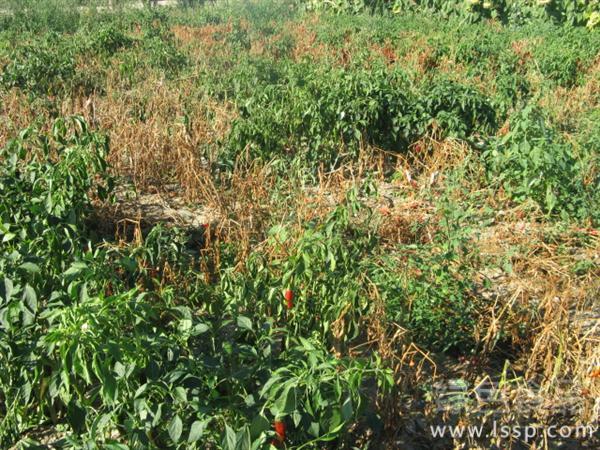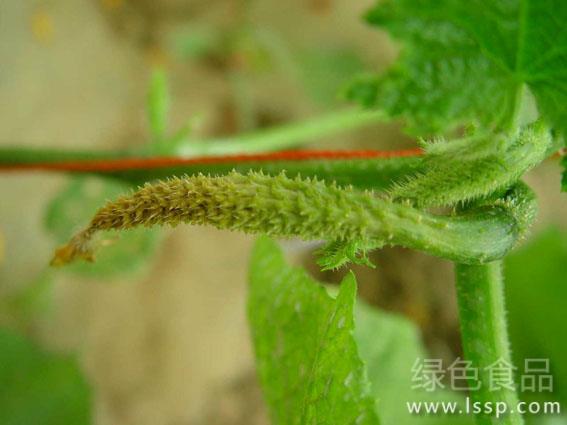How to control dead pepper seedlings in summer with high temperature and heavy rain
Vegetable farmers with experience in growing chili peppers all know that when growing chili peppers, hot peppers are easy to die in the hot season. There are many reasons for the death of pepper seedlings, such as climate, soil, diseases and insect pests and so on. So how should vegetable farmers prevent and control dead pepper seedlings?

Dead pepper seedlings
1. Select varieties: select mid-and late-maturing pepper varieties with heat resistance, disease resistance and long growth period. Generally speaking, the pepper varieties of small fruit type are more heat-resistant than those with large fruit type and smaller disease-resistant leaves, so it is best to choose red pepper, line pepper or sharp pepper with smaller leaves in summer.
2. Seed treatment: soak the pepper seeds in 55 ℃ of warm water for 15-20 minutes, then soak them in normal temperature water for 6-8 hours. After the pepper seeds are fully absorbed, drain the water, wrap them in a wet cloth, accelerate germination, and sow 80% of the pepper seeds after whitening, which can kill some germs.
3. Rational rotation: avoid continuous cropping with melons and eggplant fruits and vegetables, and rotation with rice, cruciferous and legumes for 2-3 years. If the previous crop is not rice, it is best to soak it with a rake for about a month to kill the germs in the field. And in the site, 25-30 kg of lime per mu can reduce diseases and prevent dead seedlings.
4. Strengthen field management: high border planting, reasonable close planting, rational use of water. Timely drainage after rain, ploughing and loosening the soil, in order to prevent excessive humidity. On the basis of sufficient base fertilizer, increase the application of phosphorus and potassium fertilizer, avoid partial application of nitrogen fertilizer, so as to improve the disease resistance of pepper plants.
5. Border cover grass: after pepper flowering, evenly covering rice straw with a thickness of about 2-5cm on the surface can reduce temperature and moisture, prevent Rain Water erosion, improve soil physical and chemical properties, improve soil ventilation, promote soil microbial activity, increase soil available nutrients, benefit pepper plant root growth and reduce death.
6. Change irrigation mode: popularize drip irrigation, sprinkler irrigation and seepage irrigation, reduce soil and air humidity, make soil in dry state, enhance pepper root system disease resistance; in hot weather, if flood irrigation, soil moisture saturation permeability is poor, pepper root suffocation death, aggravate pepper plant senescence. The pathogen can also spread through running water, and the susceptibility of pepper plants is enhanced.
7. Chemical control: timely use of drugs in the season of high temperature and humidity. Use 50% metalaxyl manganese zinc wettable powder 700 times solution or 50% nail cream copper wettable powder 700 times solution to prevent pepper blight.
- Prev

Can Jerusalem artichoke be planted in the north
It is obvious that there is no difficulty for Jerusalem artichoke to grow artichoke in the north. Jerusalem artichoke is a kind of cold-tolerant and drought-tolerant plant, which can endure 1-2 degrees low temperature and light frost in early spring. After growing up, its mature leaves can withstand a low temperature of minus 5 degrees Celsius. The strongest is actually its stem.
- Next

Effect of high melon rate on cucumber yield how to control cucumber melon
Effect of high melon rate on cucumber yield how to control cucumber melon
Related
- Fuxing push coffee new agricultural production and marketing class: lack of small-scale processing plants
- Jujube rice field leisure farm deep ploughing Yilan for five years to create a space for organic food and play
- Nongyu Farm-A trial of organic papaya for brave women with advanced technology
- Four points for attention in the prevention and control of diseases and insect pests of edible fungi
- How to add nutrient solution to Edible Fungi
- Is there any good way to control edible fungus mites?
- Open Inoculation Technology of Edible Fungi
- Is there any clever way to use fertilizer for edible fungus in winter?
- What agents are used to kill the pathogens of edible fungi in the mushroom shed?
- Rapid drying of Edible Fungi

